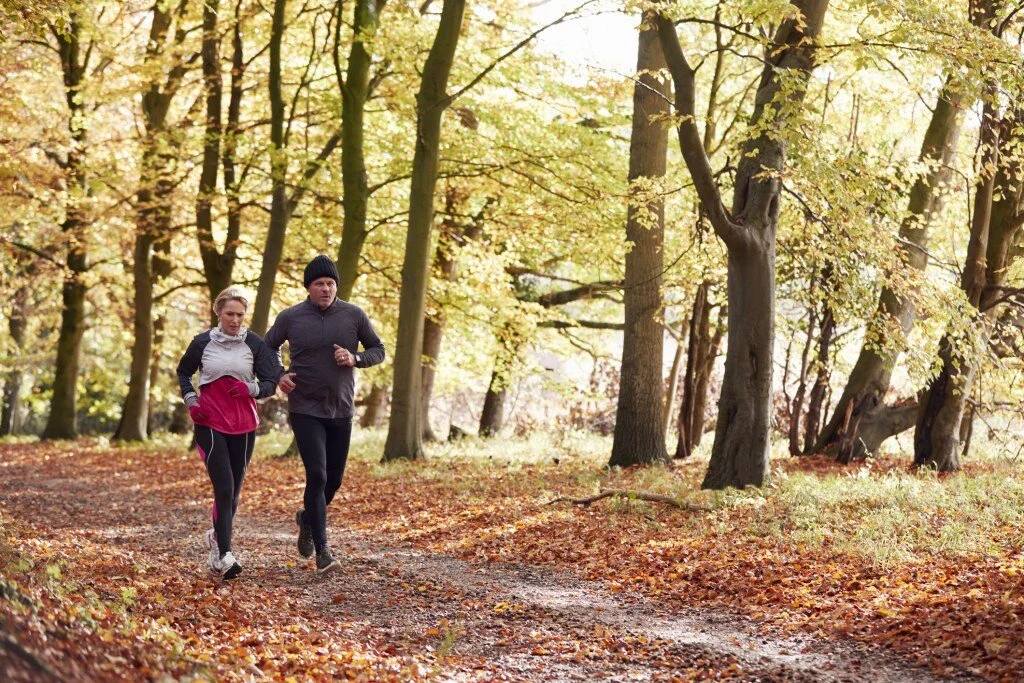Like me, you’re maybe looking forward to a return of the big road races in the coming months. Or thinking of a spring marathon for next year.
My original plan to run the Newport marathon for the first time last April got ‘tweaked’ to October 2020, and now to this coming autumn. Fingers crossed, this is the final change.
The hardest part about doing any marathon is always the training. Carving out the time for the long run; spending hours out on your feet, maybe on your own; keeping motivated through either the cold, dark, and wet of winter or the hot, sticky heat of summer.
At heart, I’m a lazy runner, and always looking for ways to work less hard. Here are five ways that I’ve found to make my training feel just that little bit easier. Whether you’re getting ready to race long or short, or just want to enjoy running for the sheer pleasure of it, here’s wishing you more fun in your running!
Find your easy first gear
On my ChiRunning workshops, we do a lot of our technique practice at a very easy pace. And it’s interesting to see how many people struggle to run slow.
Being able to jog comfortably in a ‘first gear’ pace is a useful skill to build as a runner. It helps your body warm up more gradually, rather than accelerating straight from 0 – 60. And it keeps your ‘easy’ runs properly easy.
Often, when we drop the speed, we slow our cadence, or rhythm, right down too, so we end up running on a flat tyre rather than with a light, easy step. A lower cadence means more time on the ground and more muscle work. Running slow really doesn’t feel good.
To develop an easy first gear, think of shortening your step, while keeping your feet moving in a quick rhythm, roughly 170 – 180 steps per minute. This will help you tap into your body’s natural elasticity.
Learn to breathe through your nose
If you’ve ever tried breathing nasally while running, it doesn’t feel like the most obvious way to make your training more effortless. To begin with, you’ll probably find that a) it actually feels harder and b) you’re soon sporting a double-barrelled snot gun. Not a look that many runners aspire to. But trust me on this one, it’s worth persisting.
Sticking to an easy pace on your long training runs can be challenging. The temptation is to push too hard. Once you get used to it, breathing through your nose helps keep you in the aerobic training zone. So those LSD runs take less out of you, and you’ll recover quicker.
Breathing through your nose has other benefits, too. It activates your parasympathetic nervous system (the opposite of ‘fight or flight’) to help you run relaxed. And it warms and cleans the air that you breathe in.
I now use nasal breathing for most of my easy runs. If you find that you’re struggling to take in enough air using just your nose, slow your pace down (you’ll likely find that your speed will pick up as you get more comfortable with this different way of breathing); exhale or inhale through your mouth as you feel you need to; and take plenty of tissues! You can find more on the benefits of nasal breathing, and other breathing tips in this post.
Strengthen your centre
Working on core function has been the single factor that’s made the biggest positive difference to my running over recent years. When your centre does its job well, it keeps you stable and allows you to find more power.
But ‘core training’ doesn’t mean being able to hold a plank for 5 minutes. That just makes you really good at long-hold planking. To teach your core how to support you while you’re running, you need to train it in the way it’ll be challenged while you run. Think one-legged balance positions, dynamic rotational and side-to-side movements, and whole body core rather than isolated abdominal exercises.
For me, a stronger, more functional core has meant more endurance, less fatigue and better alignment, particularly on longer runs. You can find more on how to train your core for running in this post.
Discover your secret power up
One of the quickest ways to make your running feel easier is to bring your upper body to the party. Specifically, your arm swing. As runners, we don’t tend to spend a lot of time thinking about what we’re doing with our arms. But those strange appendages hanging from your shoulders are your secret power up. Seriously.
As your leg swings behind you, the opposite arm swings back too in a contralateral pattern. It helps balance the weight of your leg, so you don’t end up being pulled around with it. And arm and leg moving rearward together puts tension in the elastic band of muscles that stretches from shoulder to opposite hip, which can then release to help bring your limbs forward for the next step. Less muscle effort. Less work.
When your arms don’t swing as they’re designed to, or the swing comes more from over-rotating the shoulders, we become more unstable and have to work harder. You can find more on how to get your arms working effectively for you in this article from fellow ChiRunning instructor Mary Jennings.
Run free
If I’m not careful, training for a marathon can start to feel like all work and no play. So, sometimes it feels good just to run with no particular plan or goal. To ignore how I’m breathing, what speed I’m running at, and what my heart rate’s doing. To just move in a way that feels good. For me, it keeps things feeling fresh, and my running mojo topped up.
So let loose from time to time. Run like a kid again: explore, play and enjoy 😊
